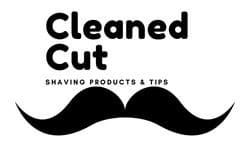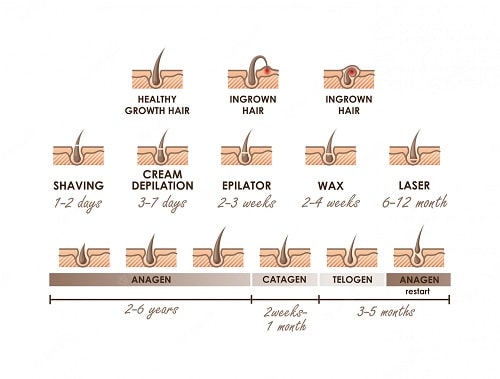Image Source: FreeImages
Anyone who has ever sported hair knows the pain of constant irritation from follicles that grow too close to their skin’s surface. When you have curly hair, these follicles tend to grow in clusters and can easily get trapped against your scalp. The result? Redness and itchiness can make just about any day feel like a hair-hating one. What if there were a solution?
A lot of things in life aren’t perfect — but when it comes to your hair, removing Inverted Hair Folliculitis (or removing ingrown hair as they are often called) should be top of mind. Not only are they painful, but they also pose a potential threat to your overall health because they can lead to serious infections and even surgery if left untreated long enough.
What is an ingrown hair and how does it happen?
An ingrown hair is the result of a hair follicle that grows sideways, trapping the hair inside of the skin and causing inflammation and redness. This happens when the hair is too close to the skin’s surface, often when the skin is too tight and unable to expand when the hair grows. Other factors that can contribute to ingrown hairs are poor shaving technique, using the wrong shaving cream or hair removal product, excessive pressure applied when using a hair removal method like waxing or threading, genetics, and skin conditions like eczema or psoriasis. Ingrown hairs are often clustered around areas where hair is frequently removed, like the legs, underarms, and face. They’re also more likely to occur in curly-haired people since curly hair is round and will get stuck against the skin. And people with coarse hair are also more vulnerable to ingrown hairs.
How to spot ingrown hair?
- Look for red bumps on your skin – If you notice a cluster of red bumps on your skin like those pictured above, it might be an ingrown hair. The bumps will likely be very itchy and painful, too.
- Check for open pores – If you’ve had ingrown hair before, you might be able to spot one before it has time to become a red bump. Open pores can also be a sign of ingrown hair, and you can check your skin for these by taking a close look at your skin in the mirror.
- Keep an eye out for infections – If you find a bump on your skin, the first thing you should do is evaluate it for any signs of an infection. If it’s red, painful, warm to the touch, or looks like it’s draining pus, it’s likely infected and you should see a doctor to get it taken care of.
- Use a magnifying mirror – In order to spot ingrown hairs and open pores, you’ll need to take a very close look at your skin. To get a really good look, set up a magnifying mirror near your sink.
Ingrown hair removal methods
- Exfoliate – Yes, even your face. Using an exfoliating face wash two times per week will help prevent ingrown hairs from forming on the lower portion of your face.
- Shave with care – Firstly, make sure your razor is clean. Secondly, shave in the direction of the hair growth. If you’re shaving your bikini line, try doing it in the shower so that the warm water relaxes the skin and makes it easier to shave.
- Use tweezers to expose the ingrown hair and remove it from your skin.
- Remove Hair with patience
- If you have a hair removal method like waxing or threading, you can try to reduce the chance of ingrown hairs by pulling the hair out with more patience than you have in the past.
- Use a topical cream
- If you have a serious ingrown hair problem, you may want to consider investing in a topical cream like Tend Skin, which can reduce both redness and the appearance of ingrown hair.
Natural remedies for Ingrown Hair
- Aloe Vera – Aloe vera has been used for centuries for its incredible healing properties, and it can be especially helpful for soothing the pain of ingrown hairs. Apply a fresh aloe vera leaf to the affected area every couple of hours to get quick relief from the itching and pain.
- Tea tree oil – Tea tree oil is another incredibly potent home remedy for all kinds of skin issues. It’s particularly helpful for soothing the itchiness of ingrown hairs without leaving your skin feeling too greasy.
- Lavender Oil – Lavender oil is one of the most calming and soothing essential oils, and it’s also highly effective at getting rid of ingrown hairs. Apply a thin layer of lavender oil to the affected area and let it sit for at least a few hours.
- Epsom salts – Epsom salts are a great way to get all of the deep-cleaning benefits of a chemical-free exfoliant comfortably and naturally.
- Papaya – Papaya works in a similar way to aloe vera, and it has some additional anti-inflammatory benefits thanks to its vitamin C content.
Shaving Care Habits To Fight Ingrown Hair
Shaving habits can have a large influence on the frequency and severity of ingrown hairs. Luckily, most of these are easy to address. Here are a few general tips to guide you on best shaving habits:
Exfoliate the skin – You may be surprised to read this one first, but it’s very important. Normally, skin cells are shed every 28 days. When you shave, you’re removing these skin cells prematurely and aggressively, which leads to skin irritation. Exfoliating before you shave will help prevent this problem.
Don’t exfoliate too often – Exfoliating the skin is usually a good thing, but too much of it can cause problems. Make sure you’re not overdoing it. Once a week is usually enough for most people. Use a gentle exfoliating product. If you’re using a scrub that has coarse granules, you’re likely to over-exfoliate the skin.
Use shaving cream or soap – Using shaving cream will help the razor slide smoothly across the skin, making for a much more comfortable shave. It will also protect the skin from irritation.
Shave in the direction of hair growth – Ingrown hairs occur when the hair grows back into the skin instead of out. Shaving with the grain of your hair growth will greatly reduce irritation and inflammation that can result in ingrown hairs.
Shave less frequently – Experts will tell you that shaving less frequently is better for your skin. It will reduce the chance of ingrown hairs and razor bumps.
Are Ingrown Hairs Genetic?
Ingrown hairs are not genetic in nature and can happen to anyone. What causes ingrown hairs is often hard to pinpoint, but it can be due to anything from shaving too close to having oily skin. Skin cells called sebum clog hair follicles, causing hairs to grow closer together. As the hairs continue to grow and get stuck on the skin, they become irritated and begin to develop into bumps. Because the bumps are caused by friction on the skin rather than genetics, anyone can get ingrown hairs.
In fact, most men and occasionally women will experience them at some point in their lives. In addition to the way you shave, ingrown hairs can also be caused by damp skin (such as after sweating) or overly tight clothing that rubs against the skin.
Are Ingrown Hairs Dangerous?
Not necessarily. However, if you continuously pick at the bump caused by the ingrown hair you could damage your skin further. Irritated and broken skin can lead to scarring or even infection. Instead of picking them, clean the area and attempt to remove the ingrown hair with a clean pair of scissors. After successfully removing it, keep the area clean and irritation free so that it can heal properly.
Recommended Products for Ingrown Hairs
Tend Skin Solution
This solution is designed to reduce the appearance of ingrown hairs, razor bumps, and redness caused by hair removal. It contains salicylic acid and glycolic acid that work to exfoliate dead skin cells and unclog hair follicles.
Fur Ingrown Concentrate
This serum is made with natural ingredients such as tea tree oil, chamomile extract, and lavender oil, which help soothe and reduce inflammation. It also contains fruit enzymes that exfoliate and prevent future ingrown hairs.
The Body Shop Tea Tree Oil
This essential oil is known for its antibacterial and anti-inflammatory properties, making it great for treating and preventing ingrown hairs. It can be used directly on the affected area or added to a carrier oil for a gentler application.
Tweezerman Ingrown Hair/Splinter Tweezers
These tweezers have a pointed tip that allows for precision when removing ingrown hairs. They are made of stainless steel, making them easy to clean and sanitize.
Anthony Ingrown Hair Treatment
This treatment contains glycolic acid and salicylic acid that exfoliate and unclog hair follicles. It also contains willowherb and lavender that soothe and reduce inflammation.
Final Words
If you’re a curly-haired person, it’s likely that you’ve dealt with a few ingrown hairs in your life. You have to be careful about how you go about removing the hair. It’s better to take your time and do it right than to rush and cause some serious damage. And if you notice a red bump on your skin, don’t try to pop it! That’s a really bad idea, and it will only lead to an infection. Instead, give it a day or two and see if it clears up on its own. If not, go see a dermatologist. They can give you a quick and painless treatment to get rid of the ingrown hair and kill the bacteria.
Ingrown hairs are a natural part of shaving, but they don’t have to be a huge problem. By following these tips, you can greatly reduce their appearance and occurrence. When you take care of your skin and use good shaving techniques, these problems will be much easier to avoid.



